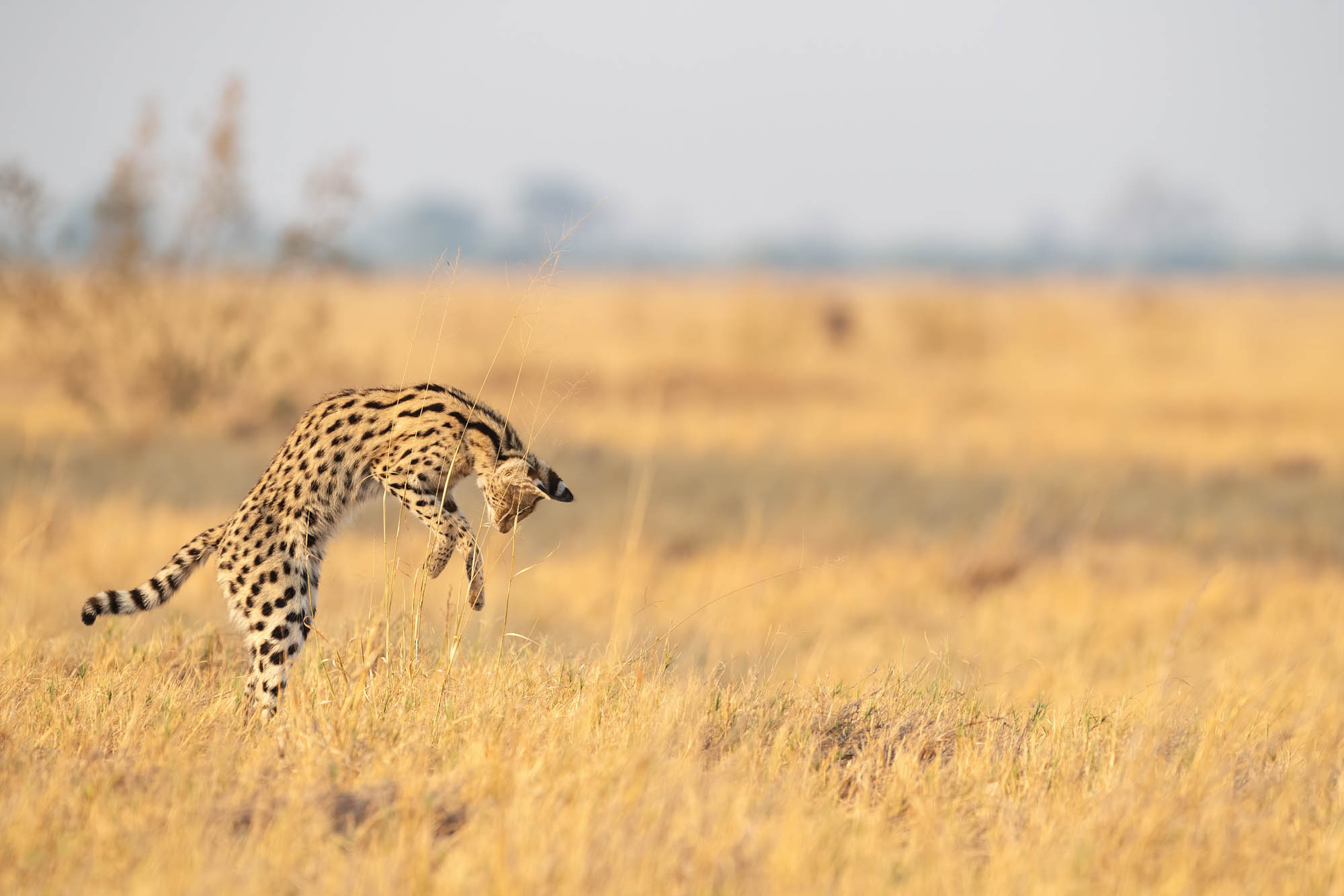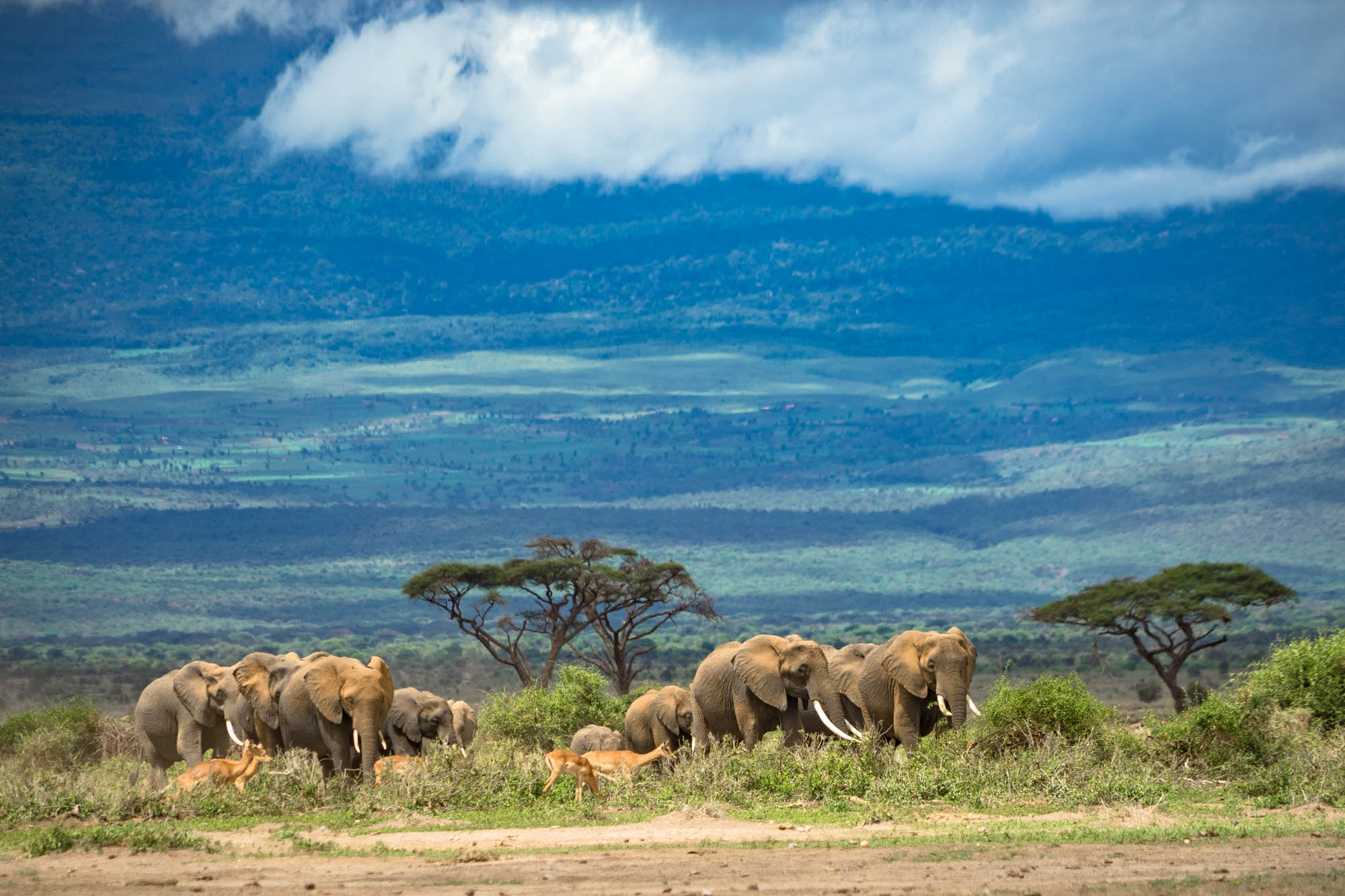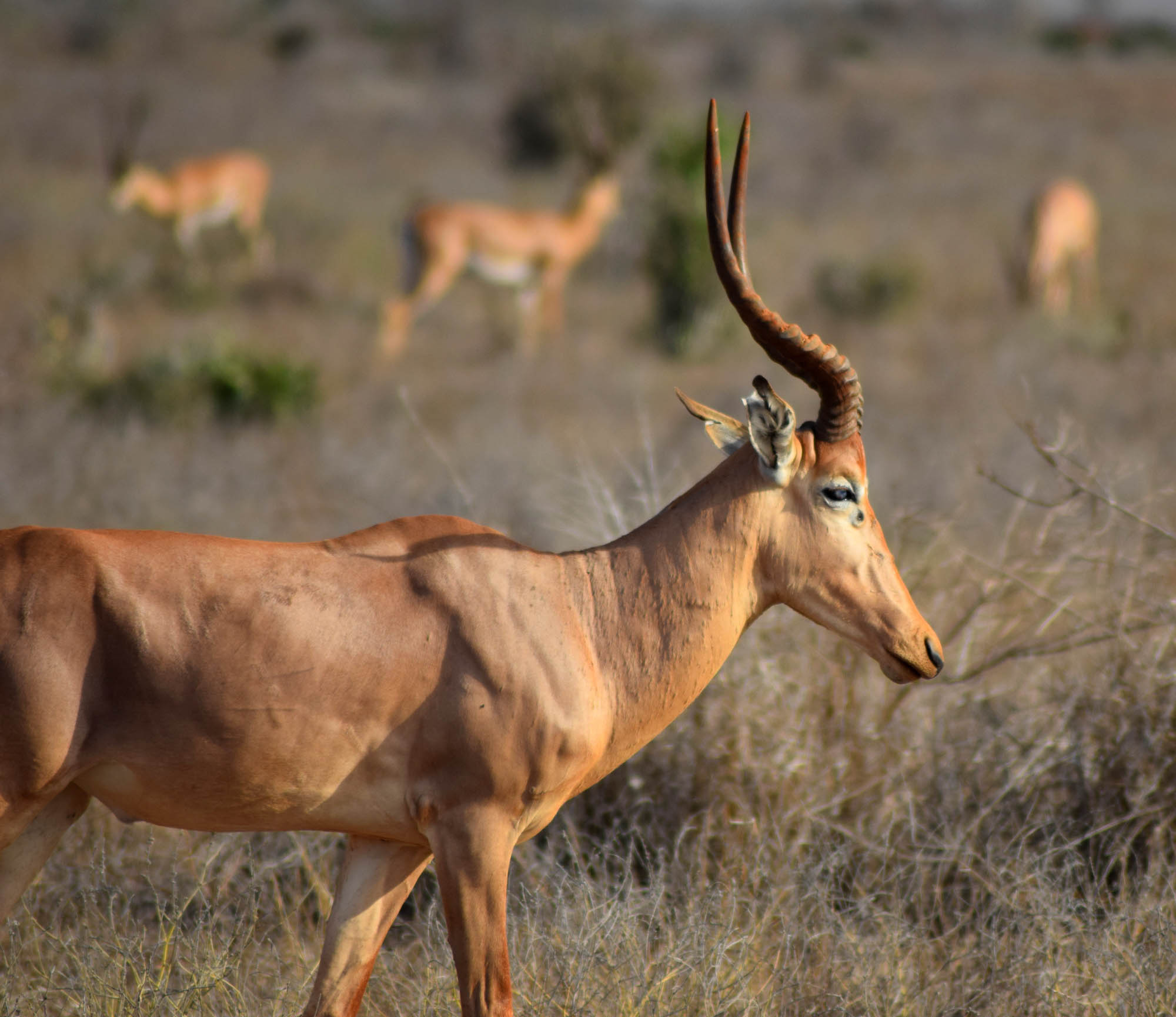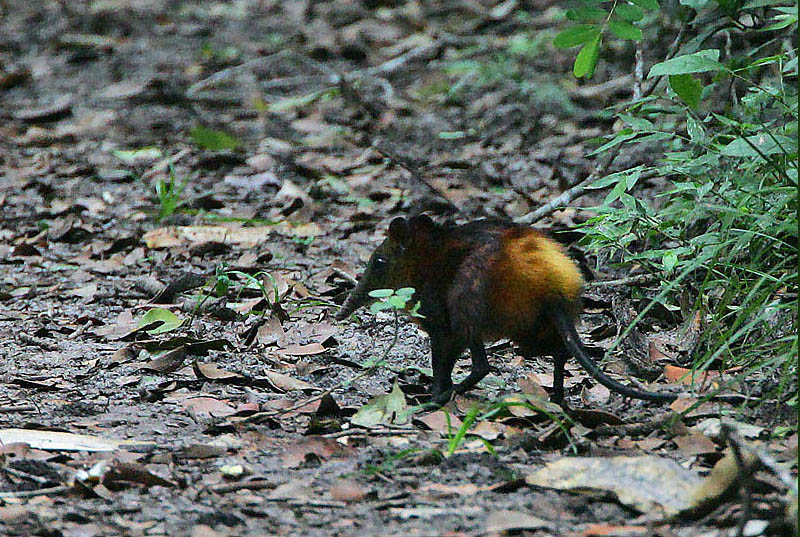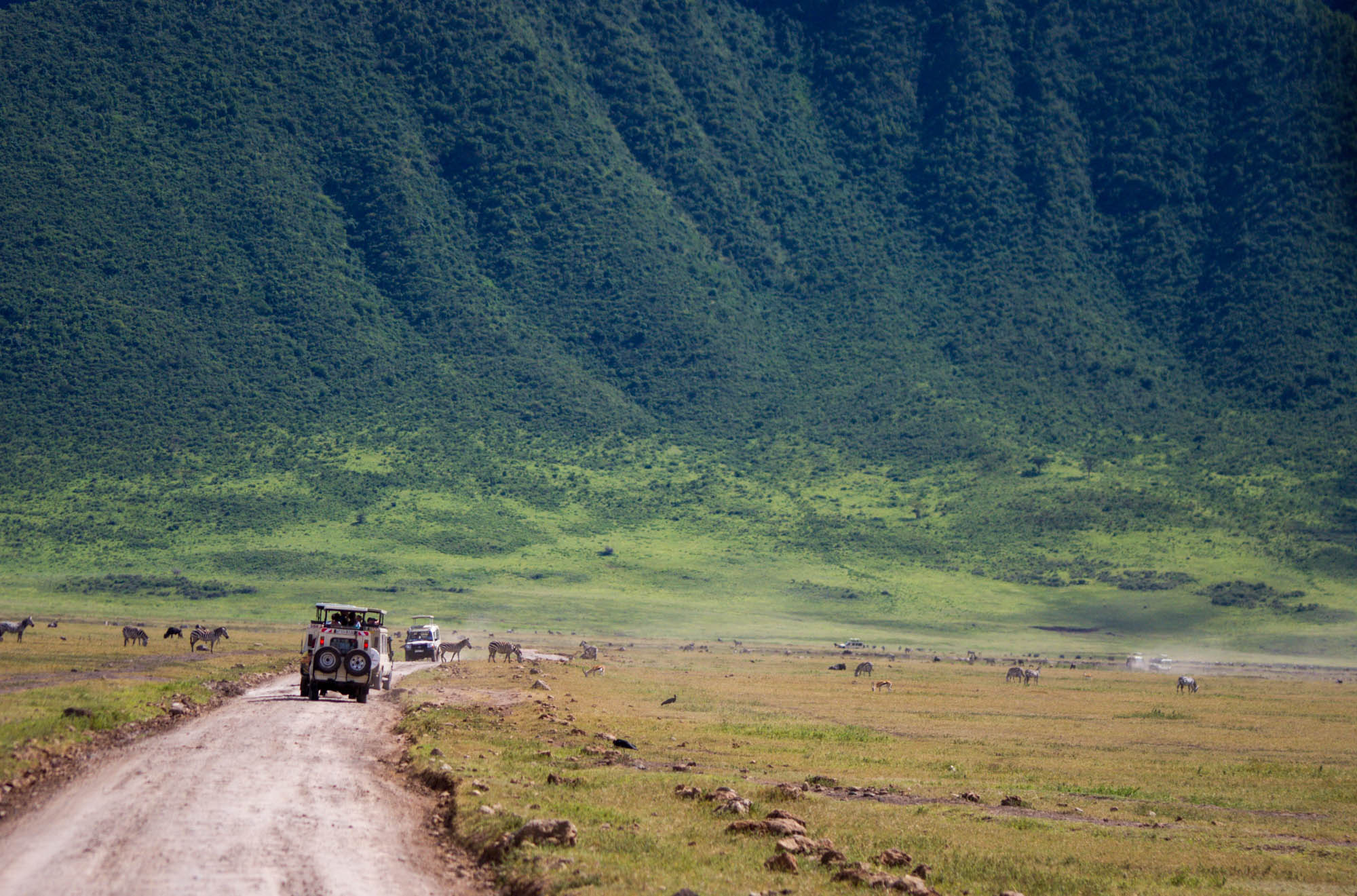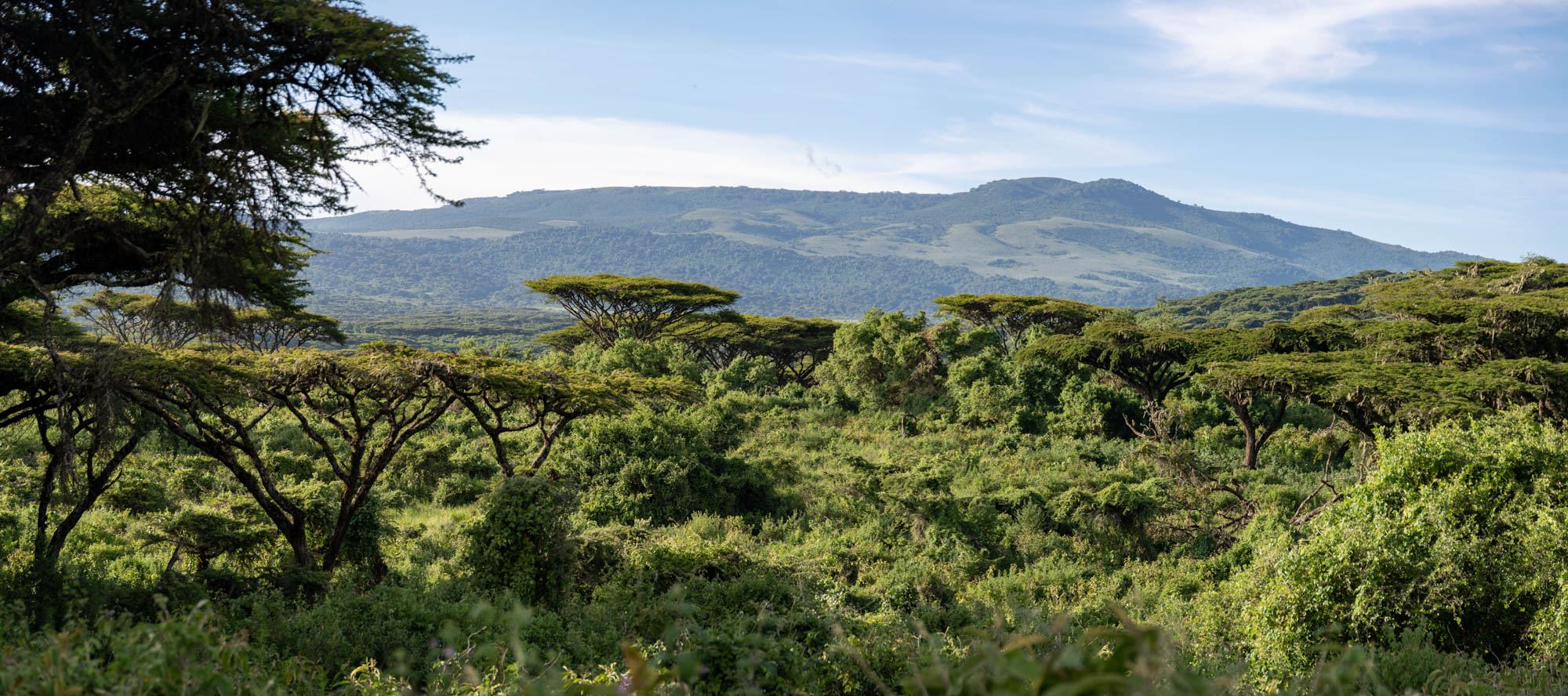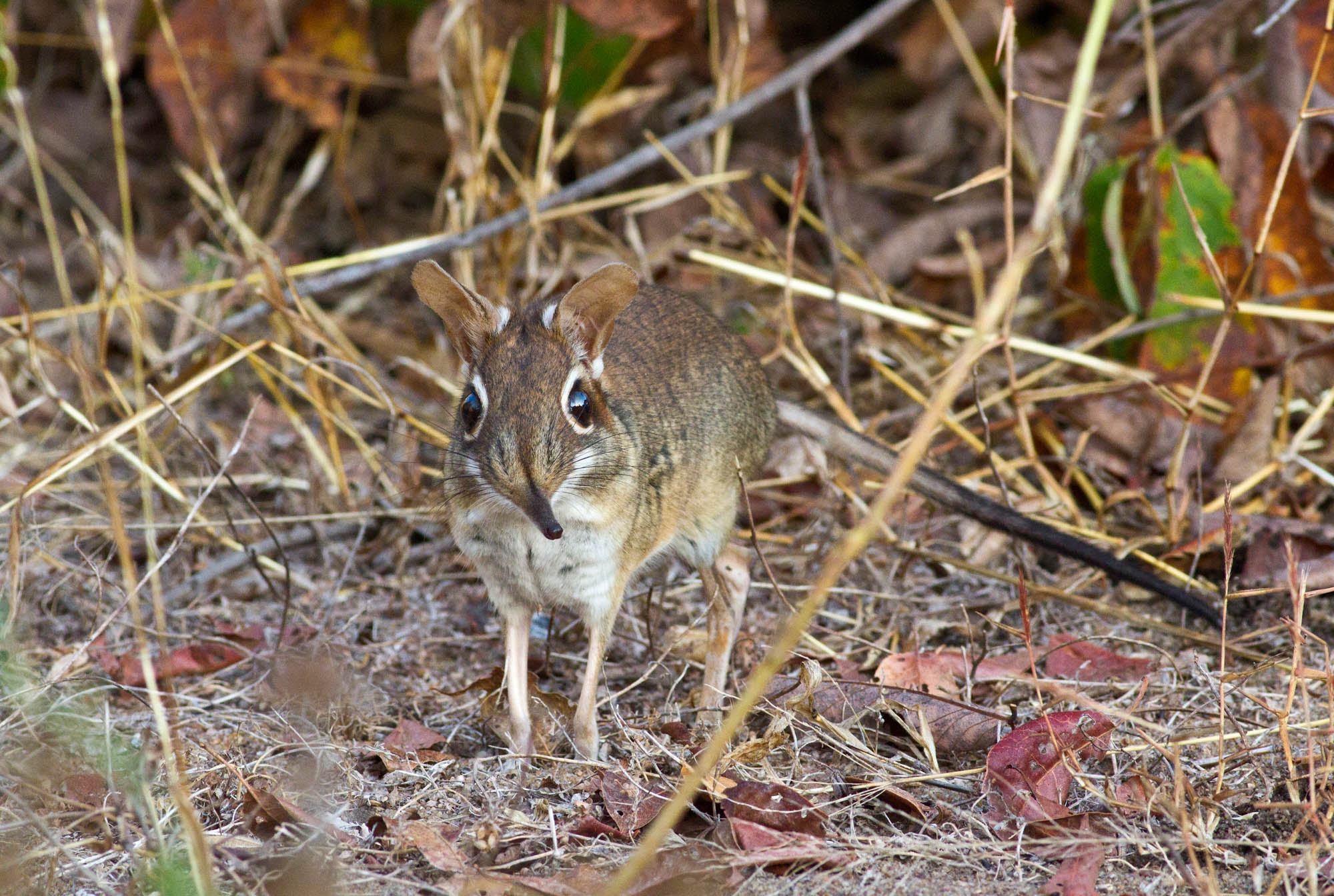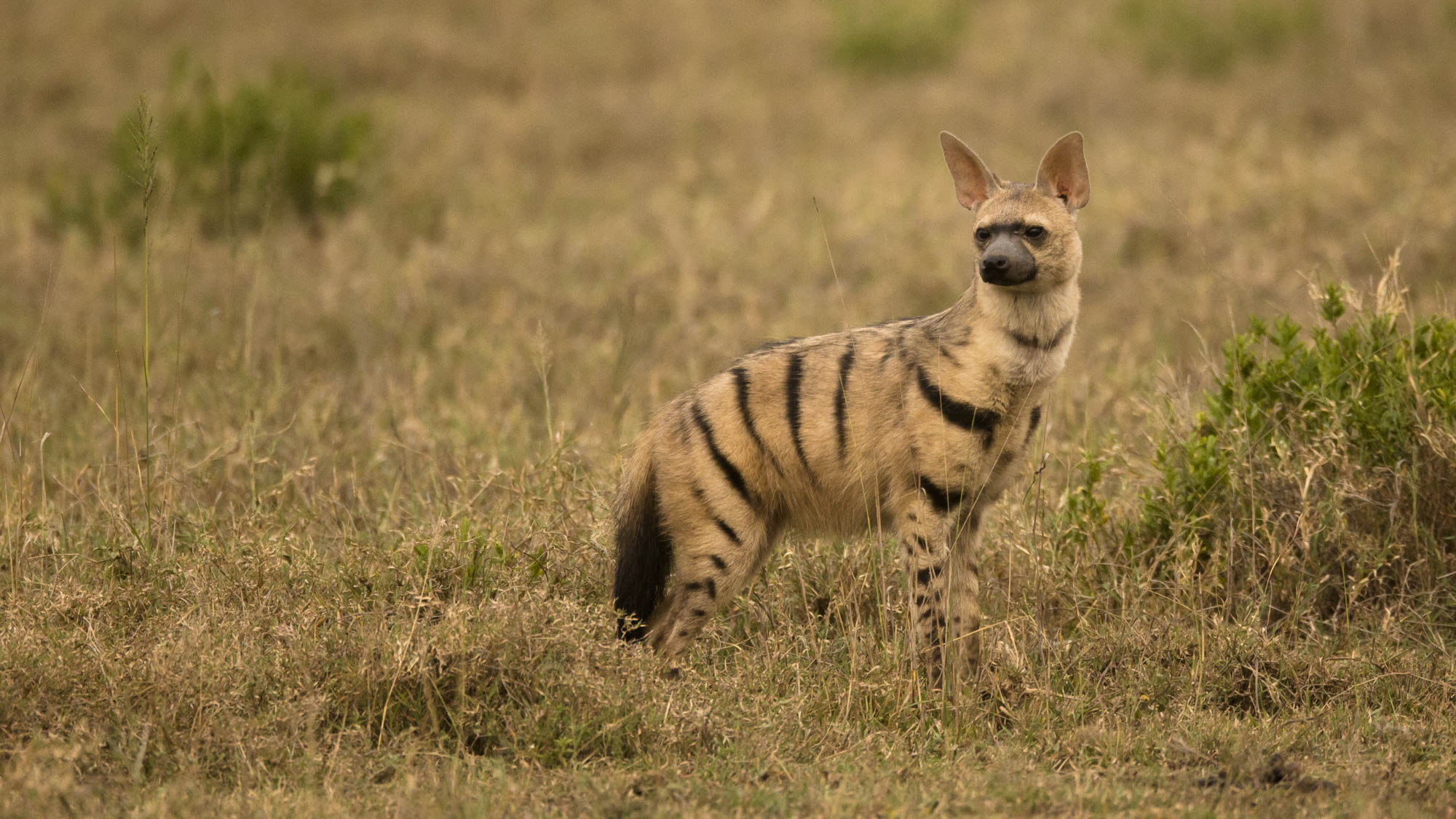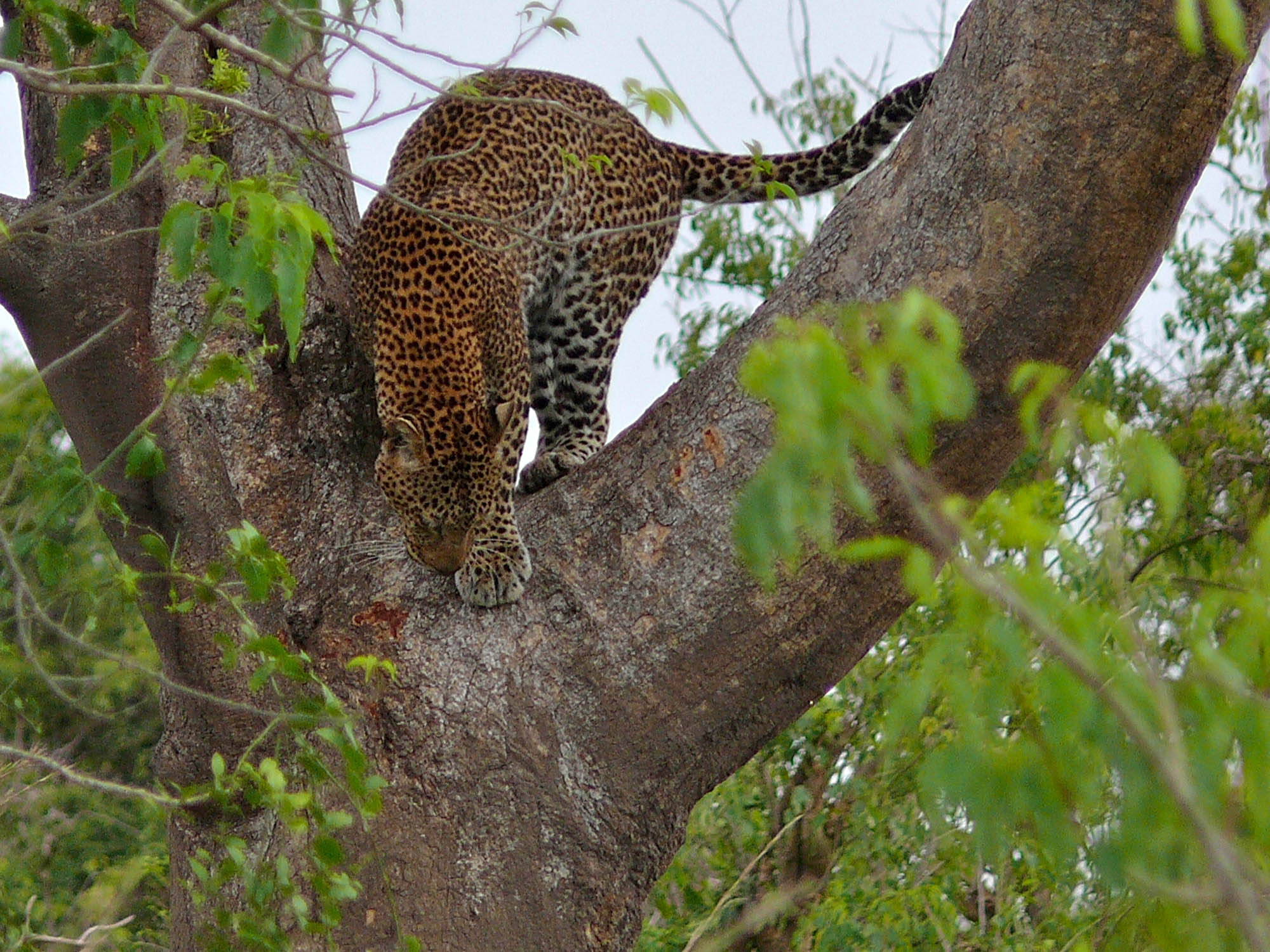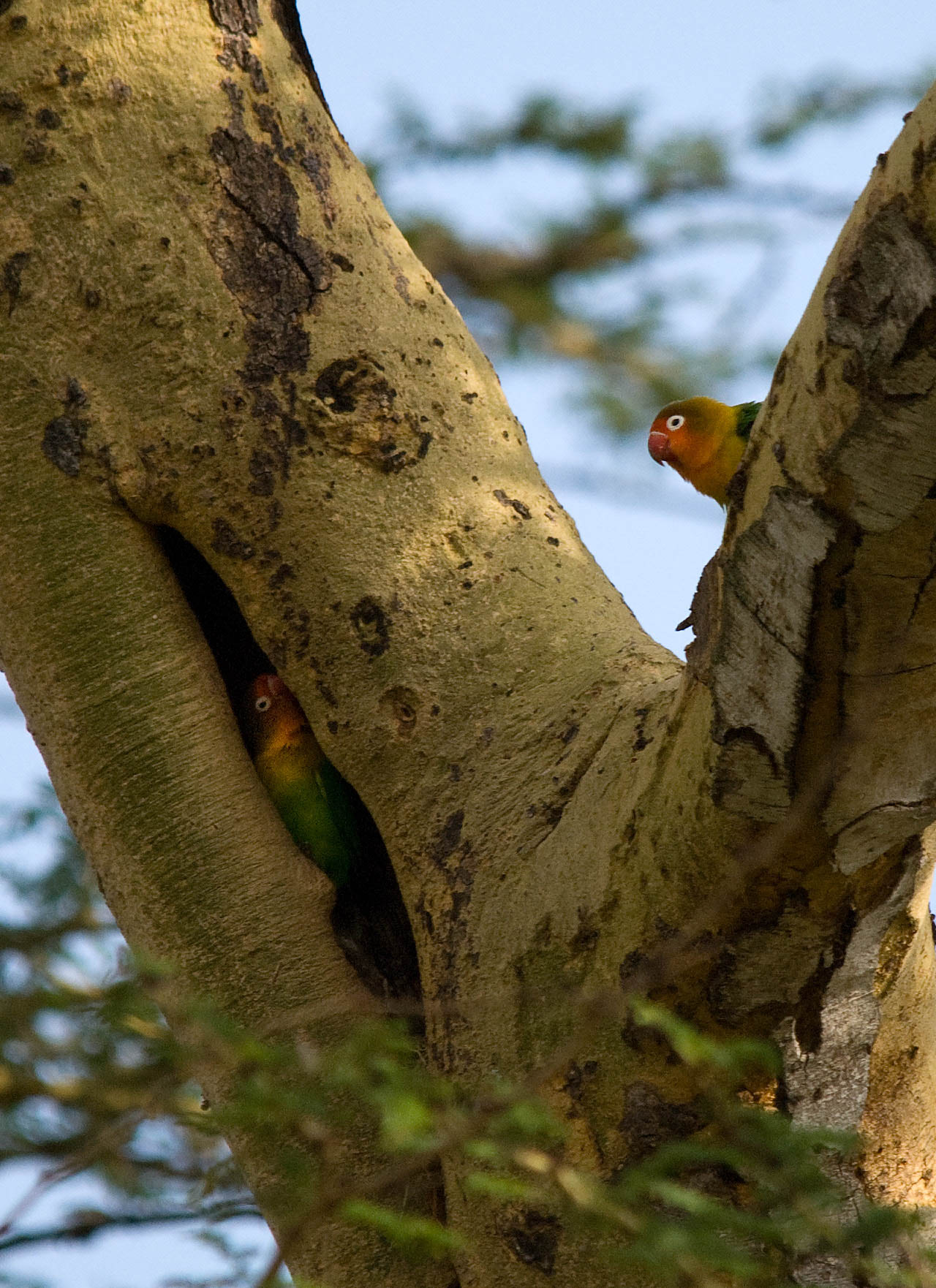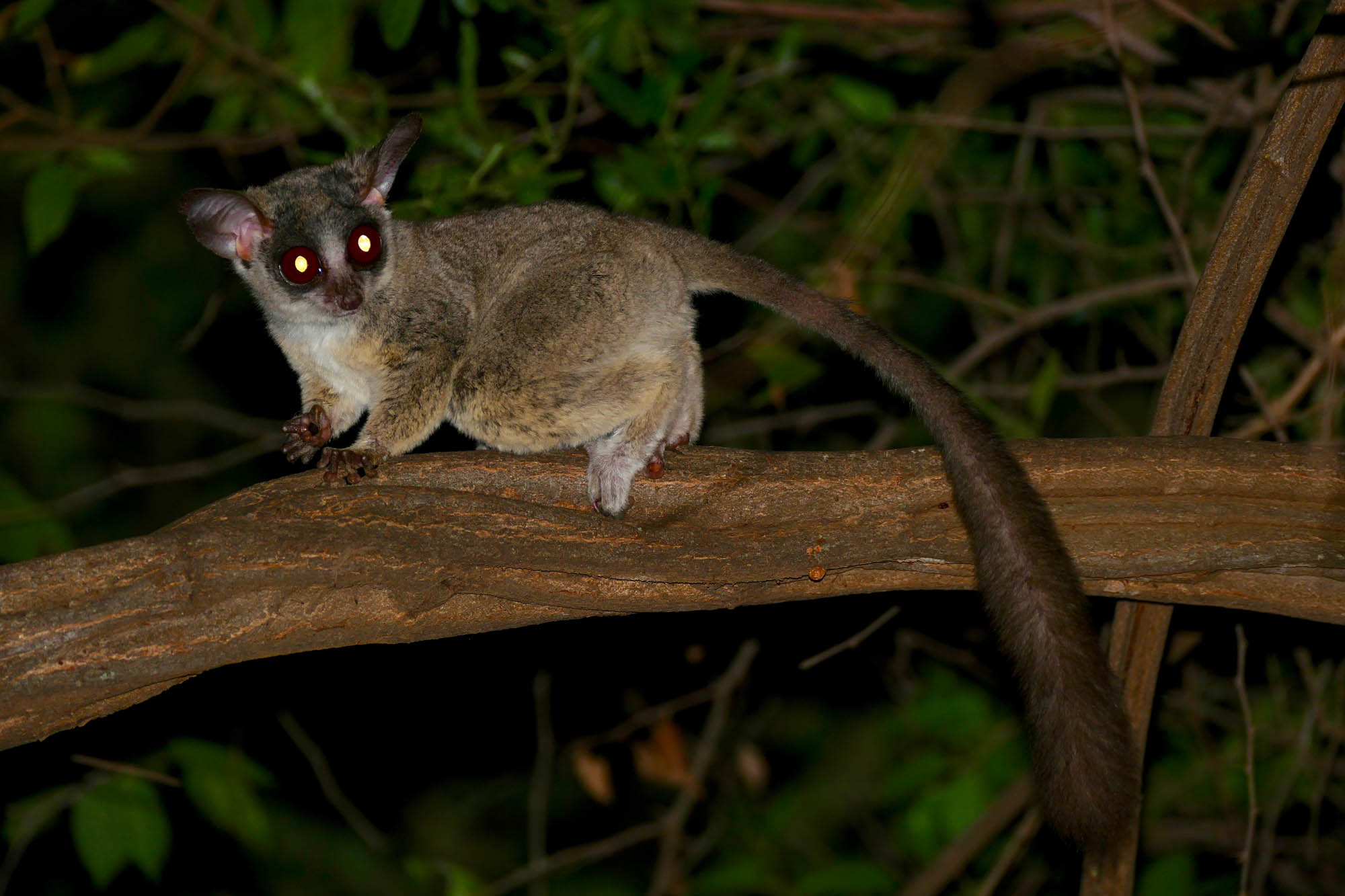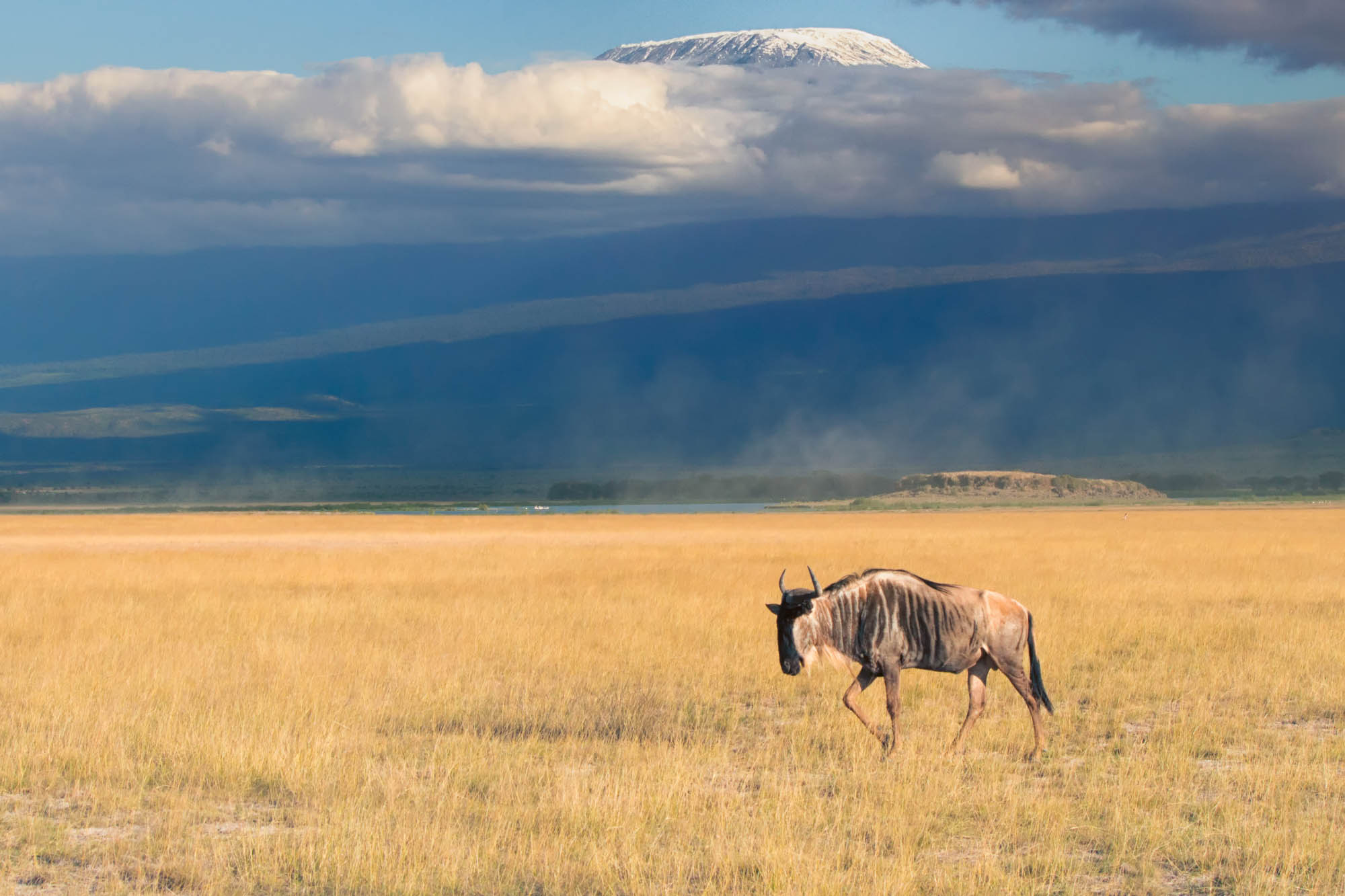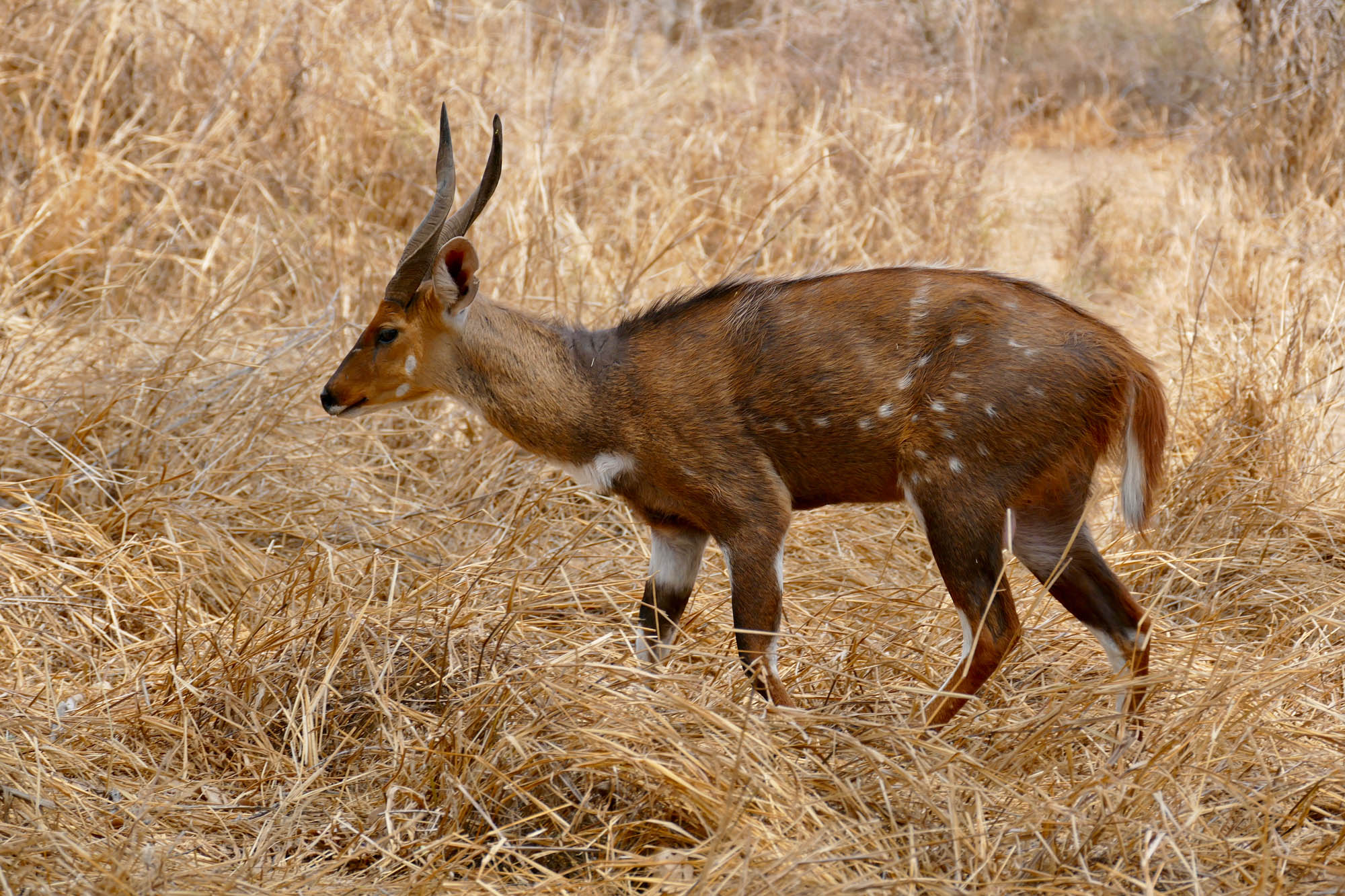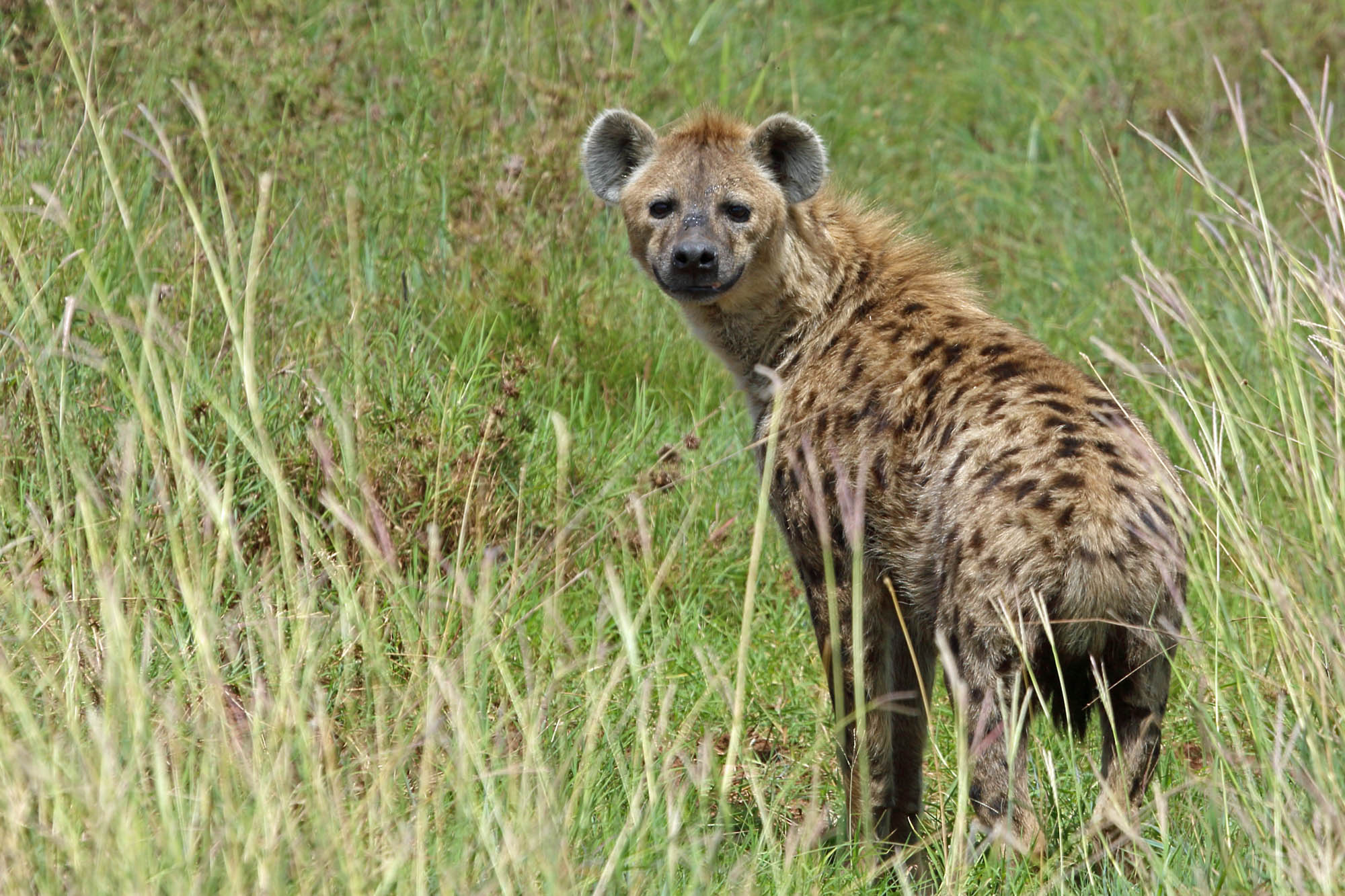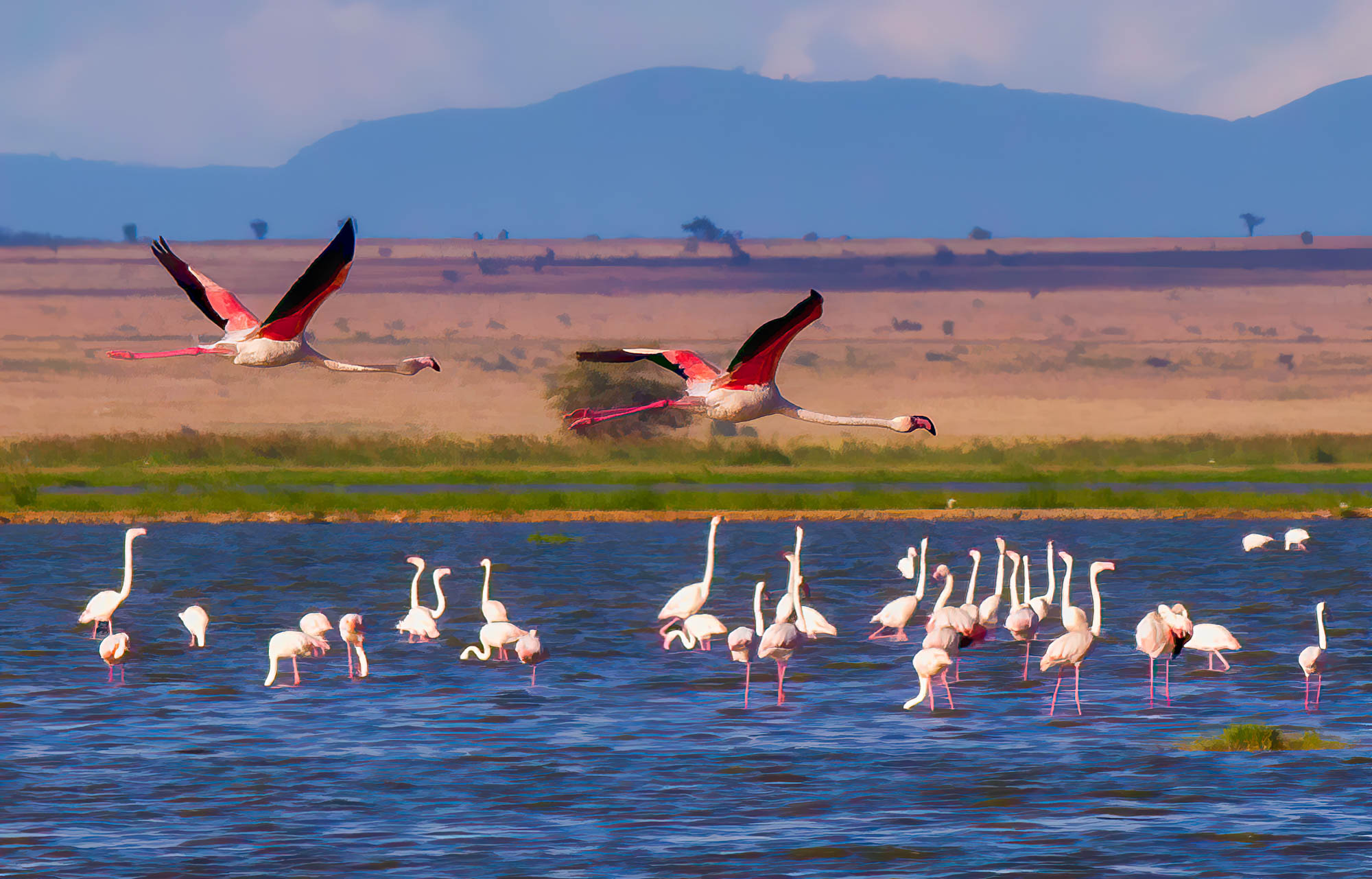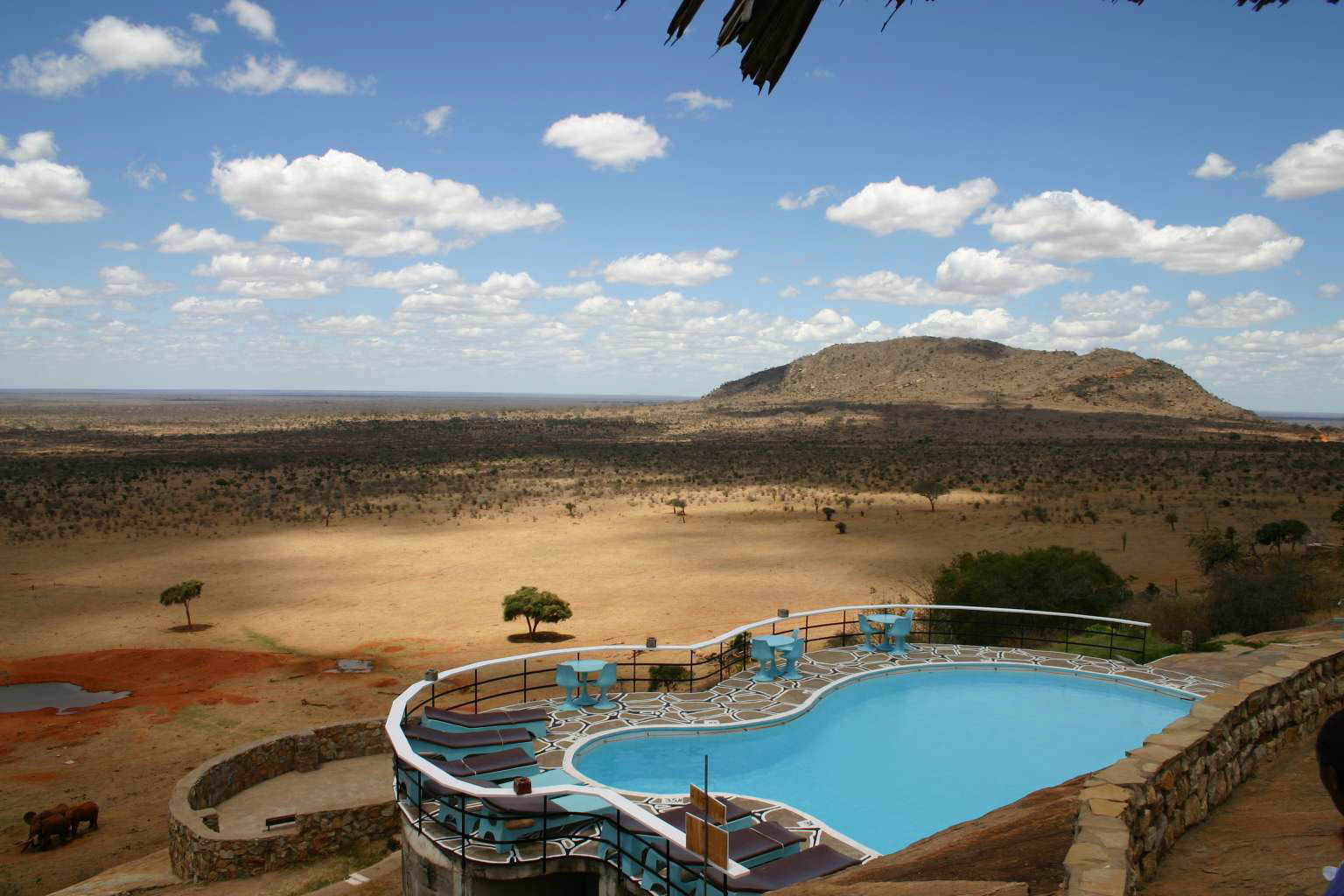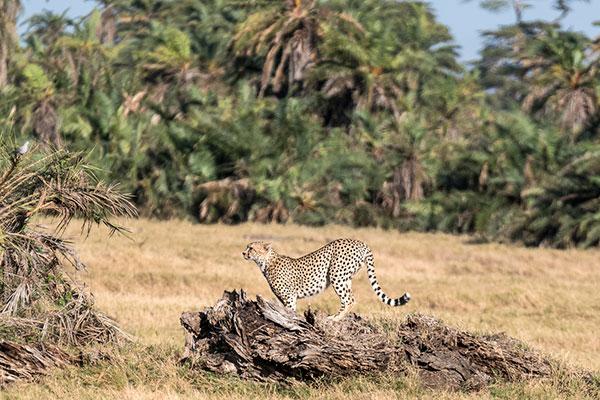


Southern Kenya
Northern Morocco

The World's Greatest Savannahs
Perhaps one of the finest game viewing reserves in the world, famous Tsavo East National Park will give us five days prime game-watching in a majestic Baobab-dotted savannah-scape.
You need do nothing more than sit above the waterhole and watch as herds of Elephant, Cape Buffalo, Zebra, Warthog, Giraffe and Eland come in to drink. On our last visit Lions, Blackbacked Jackals, Rusty-spotted Genet, Bat-eared Fox and five species of mongoose were all admired as we relaxed by the pool and looked out over the savannah!
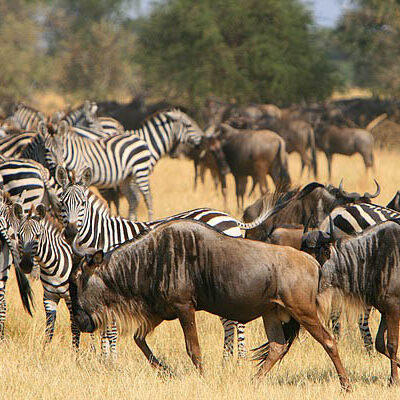
We’ll have twice daily trips out into Tsavo’s stunning savannah where we will show you an astonishing variety of bird species, including Bateleur, Secretary Bird, Kori Bustard, hornbills and many beautiful species of starling. Magnificent Martial Eagles seem to be too large for their acacia-top lookouts whilst Hartlaub’s Bustards display by herds of gazelle and both Ostrich species, Maasai and Somali can be seen with creches in tow. We’ve every chance of seeing five cat species during our visit including Leopard, Cheetah, the lovely Serval, and the elegant ear-tufted Caracal. Other mammals we’ll see include Coke’s Hartebeest, Hippos, Gerenuk, Oryx and the beautiful Lesser Kudu.
Lying south of Nairobi on the border with Tanzania, Amboseli’s wildlife-rich habitats are dominated by the huge cone of Kilimanjaro which rises steadily into the skies just to the south. Impressive herds of Elephants browse the architectural trees through the swamp that forms the beating heart of the national park and photographing these with Kilimanjaro as a backdrop will keep us busy. Giraffe, Impala and a suite of antelope species are abundant and therefore so are Lions and particularly noteworthy here are the numbers of Spotted Hyenas. In Ol Tukai’s grounds we can relax with Taveta Golden Weavers, African Paradise Flycatchers and Lilac-breasted Rollers whilst avian highlights in the savannahs and marshes will include Saddle-billed Stork, Yellow-faced Sandgrouse, Crowned Cranes and flocks of Lesser Flamingos.
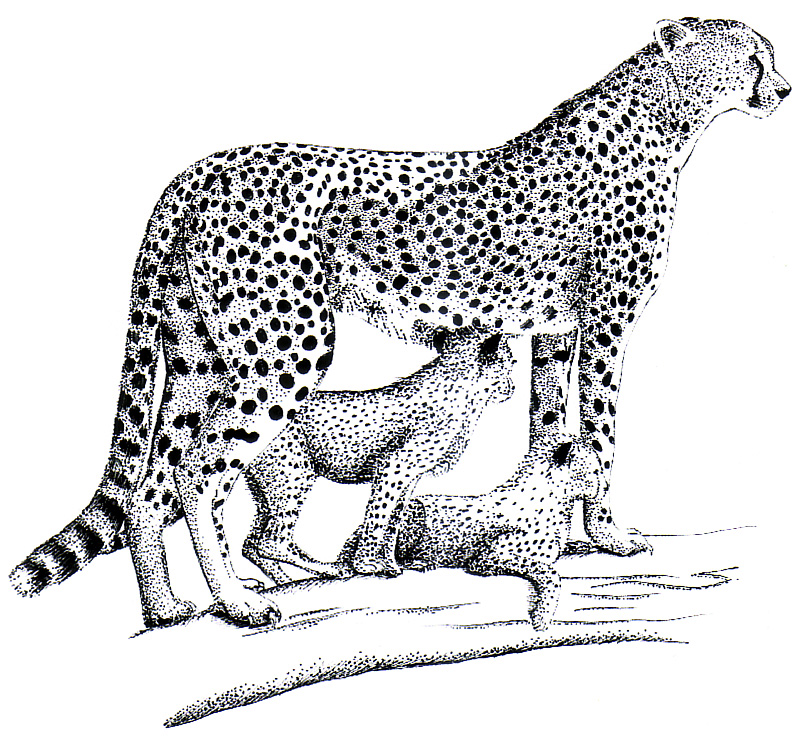
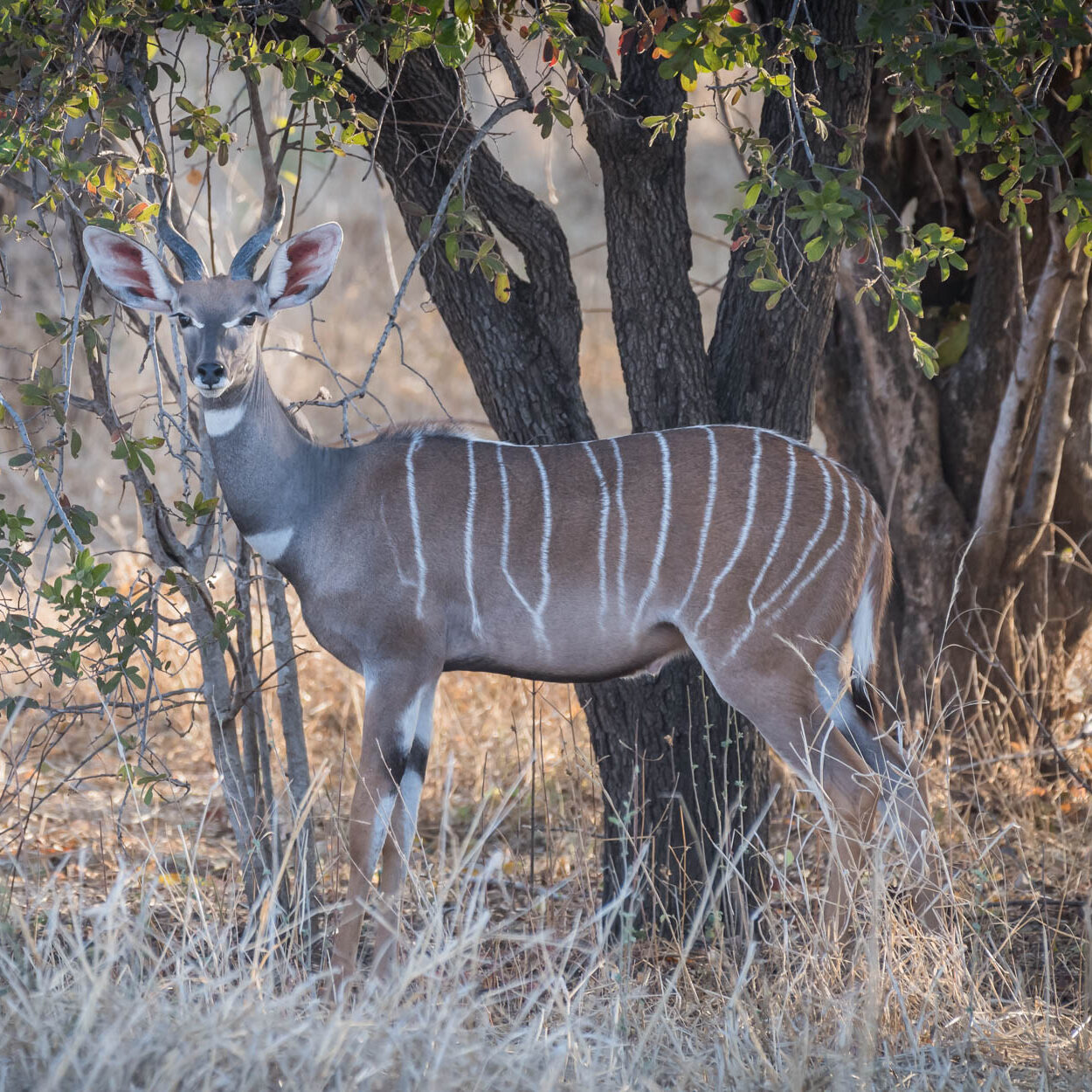
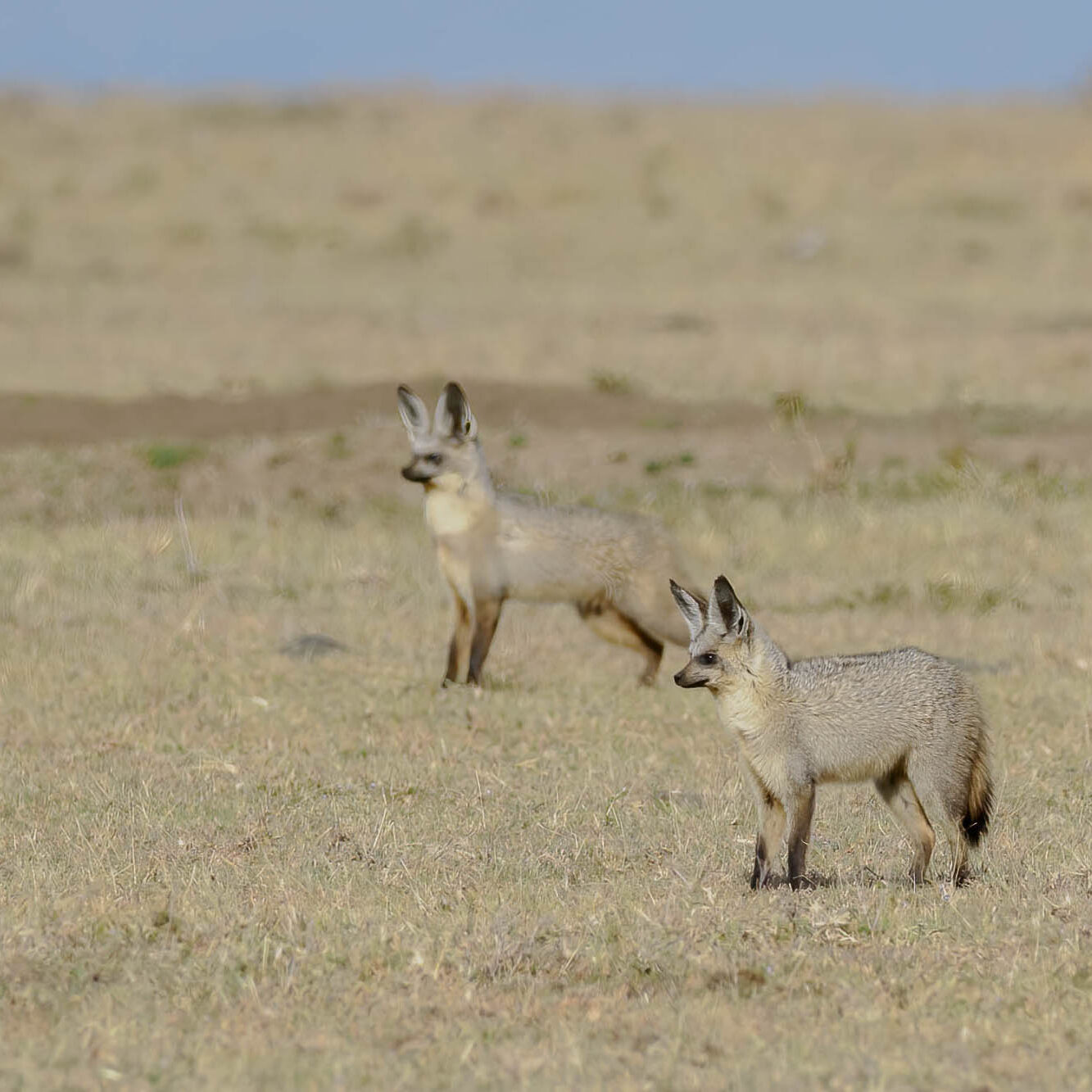
Having ‘warmed up’ with a wonderful range of wildlife on the first part of the tour we’ll now put our spotting skills to the with a very mammal-focussed second part to the tour where we’ll be seeking out the more elusive mammal species such as Golden-rumped Giant Sengi or Giant Forest Hog, Aardvark or
Maned Rat. To see such species you need to visit the right habitats and know where to look! This tour visits three contrasting areas selected to produce a fantastic range of mammals.
East of the Great Rift rise the Aberdares, a highland area that is still largely forested, and which is home to a number of rare and local mammals. Unlike the open plains of many of Kenya’s national parks the Aberdares makes the mammal watcher work much harder! But the regards are great. We’ll have one
night at the famed Ark. Here are impressive Giant Forest Hogs. Other hard-to- see species in the area include Black-fronted Duiker, Lesser Cane Rat and Ochre Bush Squirrel. Elephants provide endless entertainment and Waterbuck and beautiful Bushbuck are common. Spotted Hyenas visit the waterhole in numbers each night and you’ll likely see White-tailed Mongoose and Genets too. Brown Greater Galago and Marsh Mongoose are more rarely seen. At the nearby Aberdare Country Club we’ll look for Mountain Suni, Harvey’s Duiker and the striking Maned Rat, all to the spooky soundtrack of Southern Tree Hyraxes. Other common animals likely to be seen during the day around the park include Eastern Warthog, Striped Ground Squirrel, Grant’s Zebra, Slender Mongoose, Common Impala, Reticulated Giraffe, East African Eland and troupes of the elegant Mount Kenya Guereza.
We’ll return again to Tsavo where we’ve every chance of seeing other cat species including Leopard, Cheetah, and the elegant ear-tufted Caracal. Other mammals we’ll see include Coke’s Hartebeest, Hippos, Gerenuk, Oryx and the beautiful Lesser Kudu. And all that’s before we start the nocturnal activities.
Game drives at night in Tsavo are superbly productive. We’ll see African Civet, North African Wild Cat and plenty of Spotted Hyenas and we have seen Serval, Aardwolf and Striped Hyena on night trips here too. Taterils and Grass Rats scurry across the track. Senegal Bushbabies peer at us from Acacia foliage.
The Arabuko-Sokoke Forest, along with some relict coastal forests in Tanzania, form a biome with many unique species. The endemic Golden-rumped Giant Sengi, a curious not-so-little insectivore, buzzes back and forth across the forest tracks and we’ll see Four-toed Sengi too. Daylight will see us admiring Sykes’
Monkeys and the pretty little Zanj Sun Squirrels. Harvey’s Red Duiker are tolerably common, Ader’s is less easy to find, and any of Side-striped Jackal, Ader’s Duiker and Sokoke Dog Mongoose would be a bonus. Once darkness falls Sokoke is alive with Kenya Coast Galagos and Northern Greater Galagos. Rusty-
spotted Genets will be seen regularly and we’ll see the tiny Coastal Suni. We’ll have an optional visit to the Pangayambo and Ali Baba Caves where we can see an impressive range of Bats including African Trident, Sundeval’s Roundleaf Bat and Striped Leaf-nosed Bats.
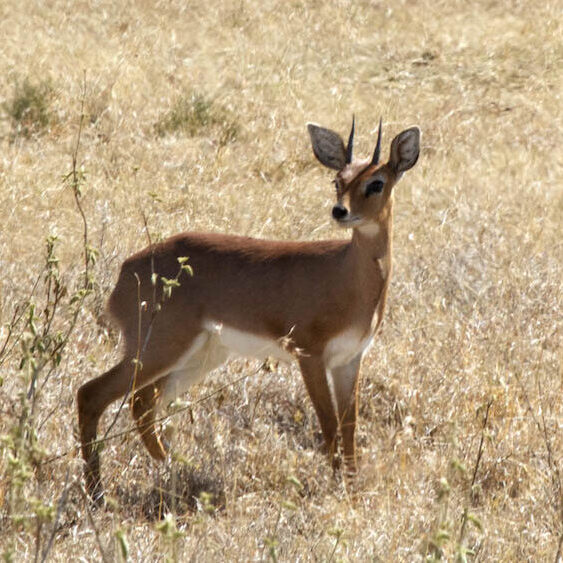
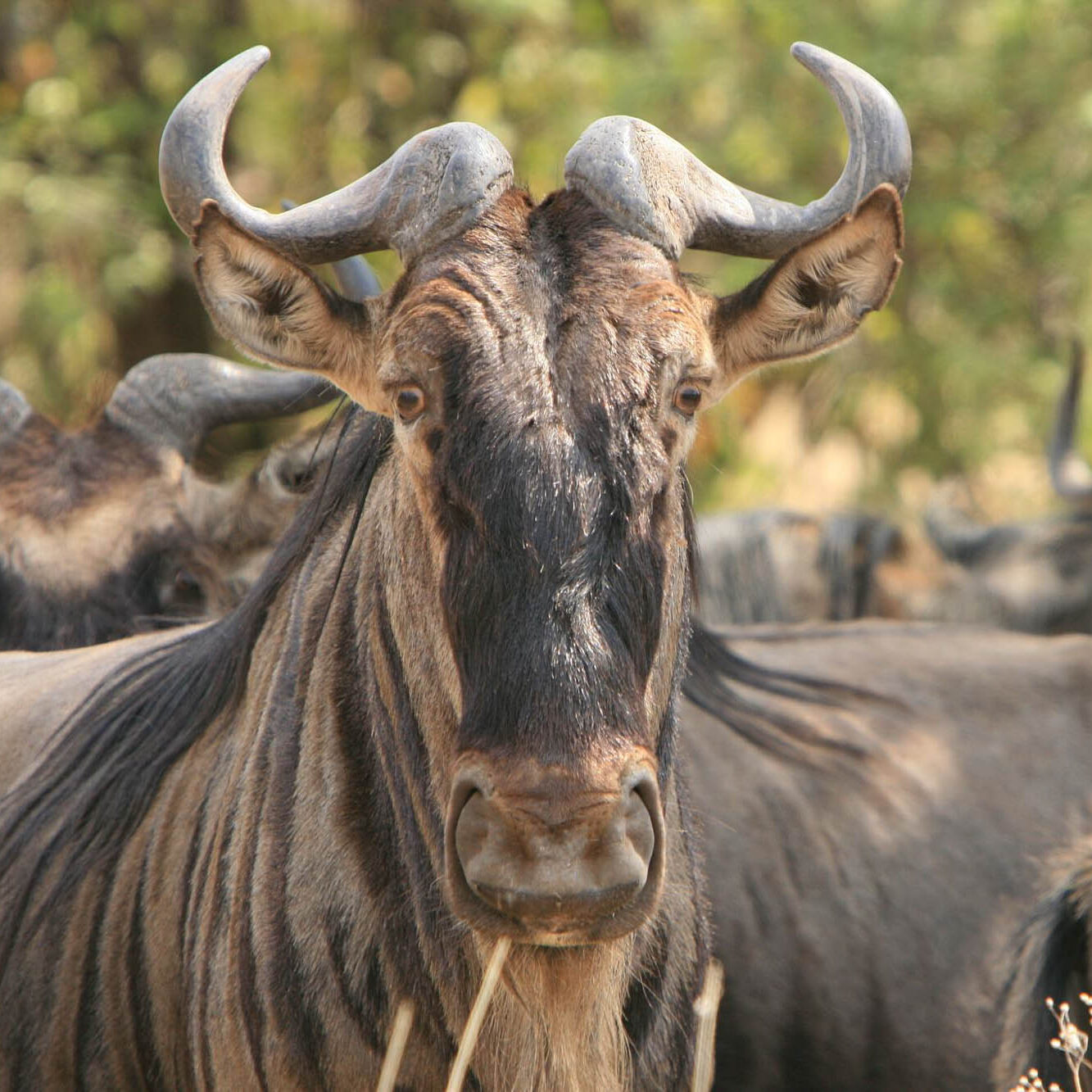
The Serengeti National Park is home to one of the greatest wildlife spectacles on Earth, as more than one million Western White-bearded Wildebeest and nearly half a million Zebra annually follow the rains across the Serengeti’s great grasslands. In total more than two million ungulates graze the Serengeti at
this season. Of course with all this food about the predators are numerous and obvious. Black-maned Lions sit about seeming to wait for their dinners and breakfasts to come to them. Leopards and Cheetahs are as easy to see here as anywhere. And Spotted Hyenas are very common. Black-backed Jackals and Bat-eared Foxes are numerous. Aside from the multitudes of Wildebeest and Zebra ungulates will also include Serengeti Topi, Hartebeest (Kongoni), Cavendish’s Dik-dik, Eland, Steinbok, and plentiful Robert’s and Thompson’s Gazelles. We’ll have the chance to study both Bohor Reedbuck and (Chanler’s) Mountain Reedbuck. Little groups of Banded Mongoose cavort across the grasslands and we’ll see both Dwarf and Slender Mongooses too. We’ll also do our best to find the elusive little Oribi, shy Side-striped Jackal, and the Serengeti is one of the very best places in Africa to watch Serval.
The Ngorongoro Crater is surely one of the natural wonders of the world. Nearly three million years old, the ancient caldera is the remnant of a huge volcano that is now one of the most beautiful wildlife havens in the world. We’ll stay in a superb lodge amongst lichen-bearded forests seven thousand feet above sea
level on the crater rim. Towering Euphorbias cling to the crater walls and on the floor, fever-and-fig tree forests provide shade for the awe-inspiring array of wildlife. Here some of Africa’s last Black Rhinos are still well protected and we’ve a decent chance of connecting with a Caracal or two. Black-maned
Lions stalk through the grasslands, flamingos crowd Magadi Lake and giant-tusked Elephants roam permanent swamps where we’ll look for more elusive mammals such as Bushpig and Egyptian Mongoose.
To the east of the great grasslands the landscape takes on a different character as huge baobab and acacia trees gradually increase in frequency. Here over two thousand square kilometres of beautiful habitat is protected by the Tarangire National Park. The river Tarangire threads its way through the length
of the reserve. In the mammal watching world Tarangire shot to prominence when a group of mammal watchers did a ‘big mammal day’ there in February 2019 and recorded a remarkable 64 species of mammal in the 24 hours! We’ll not push ourselves quite so hard. However we’re sure to enjoy the huge concentration of Elephant, Impala, Grants Gazelle, Giraffe, Reedbuck, Wildebeest (here the Eastern White-bearded form) and Buffalo that make this place one of the best wildlife areas in East Africa. We’ll look for Klipspringer, Southern Tree Hyrax, Yellow-winged Bat and both Lesser and the beautiful Greater Kudu. At
night we’ll see Spring Hares in abundance as well as Common Genet, Scrub Hare, White-tailed Mongoose and hopefully African Wild Cat. Lesser Galagos are frequent in the trees. In the ‘hoped for’ category are Zorilla, Aardvark and Crested Porcupine!
Dates and Prices
22nd October - 20th November 2024 (30 days)
* doesn't apply if you're willing to share and a room-mate can be arranged
Birds and Mammals - the second half of the tour is a dedicated mammal-watching tour.
Aniket Sardana , Georgia Wingfield-Hayes , Phil Benstead
The minimum group size is 4 and the maximum is 12. Only one leader will accompany a group of 6 or less. Aniket will be leading for the first 10 days, Phil for the last 20 days, Georgia will be second leader for the first 20 days.
All flights. Accommodation and all meals in Kenya. Services of your leaders. Entrance to National Parks. Please note: Drinks, tips, Kenyan Visas, any optional night drives, and items of a personal nature such as travel insurance, are not included.
Optional Night Safaris at Tsavo (up to four available) are £80 per night per person and in the Arabuko Sokoke Forest (three available) are £90 per night per person.
Bird, mammal and butterfly checklists are available.
In Amboseli we’ll stay at the excellent Ol Tukai Lodge whose very comfortable rooms have amazing views of Mount Kilimanjaro. The wonderful fare on offer at the buffets is legend. In Tsavo East National Park we will be staying in the Voi Safari Lodge where the panoramic views over the game-filled savannah are second to none. The rooms are of a high standard and all have views over those plains! Whilst you can sit and relax around the property and watch the goings on at the water hole below there is a covered hide right by the waterside that allows great photographic opportunities. Both lodges have a richly varied birdlife within the grounds and lots of mammals visible from them too!
After a night back in the Four Points by Sheraton Hotel by Nairobi Airport we’ll head to the coast and a three night stay at the Turtle Bay Beach Resort in Watamu. This excellent resort is right by the sea, has a nice swimming pool, and most importantly is close by the Arabuko-Sokoke Forest! In Tsavo East National Park we return to the Voi Safari Lodge for a two night stay. In the Aberdares we will be stay the first night in the Ark. An extraordinary place with quite a history. The rather unappealing wooden structure of the lodge looks out over a truly wonderful waterhole and everything is designed around viewing at this waterhole. The rooms are pleasant and dining excellent. You are not allowed outside after dark. However you are at the Aberdare Country Club and we’ll spend two nights there enjoying the fine grounds, comfortable rooms and mammal-rich surroundings.
Returning to Nairobi we have a night in the Four Points by Sheraton Hotel by Nairobi Airport before we head to northern Tanzania. The Serena Lodges are renowned in East Africa and are found in many of the region’s national parks. They are often the best lodges in any given area and most certainly they always get the best locations! In both the Serengeti and the Ngorongoro we stay in the respective Serena Lodges and they could hardly be better. The Serengeti Serena Lodge is set amid wildlife-rich grounds with fabulously comfortable rooms looking out over the savannah. There’s a fine pool to relax in and never ending wildlife in the property itself. The Ngorongoro Serena Lodge is equally fabulous and its position on rim of the crater is truly remarkable with sweeping views over the caldera and all the animals far below. We’ve four nights in the Serengeti Serena and three nights in the Ngorongoro Serena. The tour finishes with two nights at the Tarangire Safari Lodge. This is a step down in class, but only just! Again the lodge enjoys a superb location with views out over the tree-dotted savannah and plentiful wildlife in the grounds.
All rooms on this holiday are en-suite and have air-conditioning or fans.
Very easy. Always at a relaxed pace and never more than two or three miles each day.
Transport
Throughout the tour we will be using safari-converted stretch 4×4 Land Cruisers and everyone is guaranteed a window seat.
UK return flights are direct from London Heathrow to Nairobi. Add-ons are available from various UK airports*. Other indirect routes from regional UK Airports* are available.
*These routes may incur a supplement.
On the Kenyan section average maximum daily temperatures are around 29°C. We should expect occasional thunderstorms. In Tanzania Daily temperatures reach close to 30°C daily, usually a bit less, especially at Tarangire and Ngorongoro and it can be quite cool at all locations during the latter part of the night and early mornings with temperatures dropping to around 10°C on the crater rim by the time the morning safari starts! It is the end of the dry season which also means it is the start of the rainy season! So it might still be largely dry or there might be some rainfall about, however the latter is usually short- lived, though sometimes intense, and is usually in the afternoons.
It is possible do do the first 20 days of this tour, Southern Kenya or the last 20 days Kenya and Northern Tanzania. It is also possible to do each section – Kenya (wildlife at leisure), Kenya (mammal watching) or Northern Tanzania (mammal watching) individually.
Contact us to check if there is availability for the number of places you require. Click on the ‘Book this Tour’ button on this page to be taken to the online booking form or contact us and we will send one to you which you can complete and send back to us. You will receive confirmation of your place, and then a detailed information pack will be dispatched to you about twelve weeks before departure. This will contain up-to-date health information.
